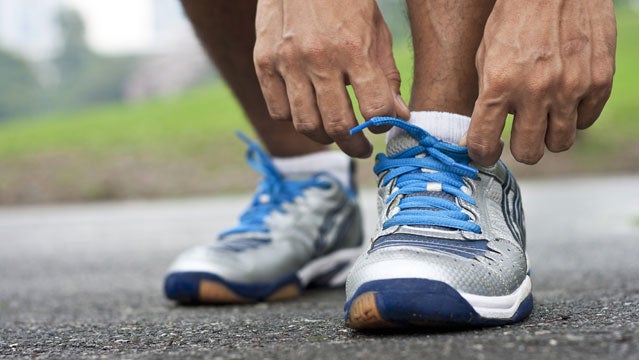It’s all too easy to dismiss New Year’s resolutions as something that no one actually keeps—but according to research, that’s not necessarily true. Resolutions stick when goals are clearly defined and strategies are set in place. To up your chances in 2014, we looked at the most recent studies on how to meet some of your most common fitness goals.
Want to burn more calories? Use your smartphone.
Whether you’re looking to lose weight or build muscle, the key to success is keeping track of your progress. A year-long study published last month in the found that dieters who attended twice-monthly group weight-loss meetings and also tracked their food and exercise with a mobile app .
Recording how many miles you’ve run or how many sets of weights you’ve lifted—and how many calories you’ve burned as a result (along with how many you scarf down afterward)—can provide feedback and motivation to keep going day after day.
Get started with these fitness apps.
Want to set a new PR? Interval train.
If you’re signed up for a race in 2013 and are hoping to beat your previous personal record, chances are it’s going to take more than your regular old running (or swimming or biking) routine. Instead, try adding a few 30-minute, high-intensity interval workouts to your weekly schedule: A study published in the in May found that runners who followed a “10-20-30” program were able to shave almost a minute off of their 5K times in just seven weeks—despite .
So what’s this magic formula? Start with a five-minute warm-up. Then run (or insert cardio of your choice here) for 30 seconds at slow pace/low effort, 20 seconds at medium pace/medium effort, and 10 seconds at fast pace/near maximum effort. Rest for two minutes and then repeat for a total of five consecutive intervals over 30 minutes.
Follow this 30-minute guide to maximizing your interval training.
Want to live longer and better? Sit less.
Looking for one small change that can make the biggest difference on your overall health? Several studies from this year alone would suggest that , reduced risk of chronic disease (including diabetes, colon cancer, and Alzheimer’s), and healthy weight maintenance. And yes, that’s before or after work.
And there are easy, concrete ways to realize this goal, too: Set reminders on your computer to get up and walk every hour during the workday; try out a standing desk or host a standing meeting; or take your car less and walk or bike, instead.
Here’s more on how to stand up.


